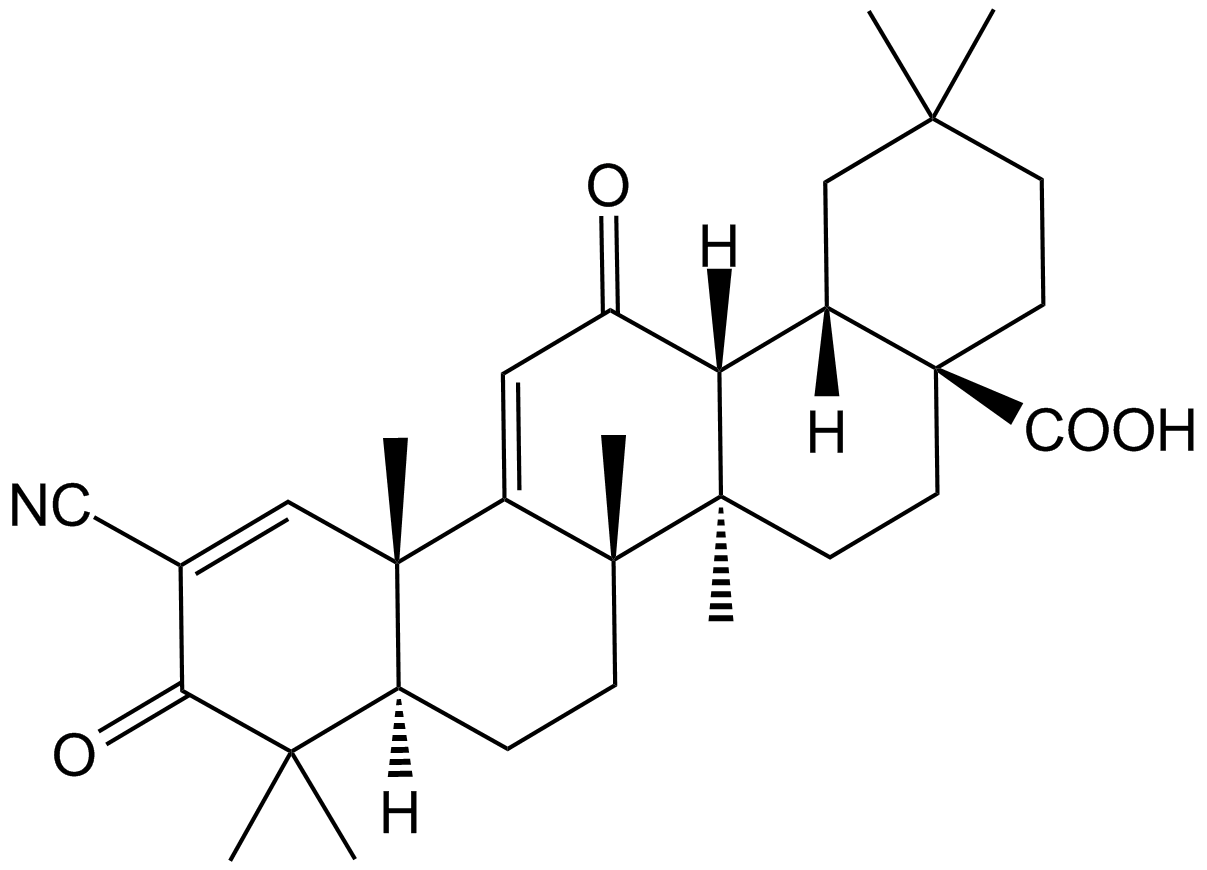Bardoxolone (Synonyms: Bardoxolone, RTA 401) |
| Catalog No.GC15371 |
An anti-inflammatory compound that activates Nrf2/ARE signaling
Products are for research use only. Not for human use. We do not sell to patients.

Cas No.: 218600-44-3
Sample solution is provided at 25 µL, 10mM.
Bardoxolone is a novel nuclear regulator factor (Nrf-2) activator.
Bardoxolone methyl, a novel synthetic triterpenoid and antioxidant inflammation modulator, potently induces Nrf2 and inhibits NF-κB and Janus-activated kinase/STAT signaling. Bardoxolone methyl has been shown to induce differentiation, inhibit proliferation, and induce apoptosis in cancer cell lines[2].
Kidney sections from Bardoxolone methyl-treated monkeys demonstrates decreased megalin protein expression despite similar mRNA expression across groups. The visualized decrease in megalin protein expression is confirmed by densitometry analyses, which demonstrated that Bardoxolone methyl administration significantly decreased megalin protein expression in the monkey kidney. Bardoxolone methyl administration does not affect the protein expression of cubilin in the kidney or the mRNA expression of cubilin in the kidney. The creatinine clearance in monkeys administered Bardoxolone methyl significantly differed from that at baseline and in vehicle-treated animals on day 28. After 28 days of Bardoxolone methyl administration, urinary albumin-to-creatinine ratios (UACRs), determined from the 24-hour urine collections, are significantly increased compared with those in animals receiving vehicle. Of note, UACRs decreases 53.3% in vehicle-treated animals and increased 27.9% in Bardoxolone methyl-treated monkeys[3]. Male C57BL/6J mice are administered oral BARD during HFD feeding (HFD/BARD), only fed a high-fat diet (HFD), or fed low-fat diet (LFD) for 21 weeks. Compared with LFD mice, HFD mice have a marked increase in the number of F4/80 crown-like structures (+95%; p<0.001), which is effectively prevented by BARD (−50%; p<0.01). Similarly, the number of F4/80 interstitial macrophages is significantly higher in HFD mice by 98% (p<0.001) compared with LFD mice and by 32% (p<0.01) compared with HFD/BARD mice[4].
References:
[1]. McCullough PA, et al. Cardiac and renal function in patients with type 2 diabetes who have chronic kidney disease: potential effectsof bardoxolone methyl. Drug Des Devel Ther. 2012;6:141-9.
[2]. Hong DS, et al. A phase I first-in-human trial of bardoxolone methyl in patients with advanced solid tumors and lymphomas. Clin Cancer Res. 2012 Jun 15;18(12):3396-406.
[3]. Reisman SA, et al. Bardoxolone Methyl Decreases Megalin and Activates Nrf2 in the Kidney. J Am Soc Nephrol. 2012 Oct;23(10):1663-73.
[4]. Dinh CH, et al. Bardoxolone Methyl Prevents Mesenteric Fat Deposition and Inflammation in High-Fat Diet Mice. ScientificWorldJournal. 2015;2015:549352.
Average Rating: 5 (Based on Reviews and 30 reference(s) in Google Scholar.)
GLPBIO products are for RESEARCH USE ONLY. Please make sure your review or question is research based.
Required fields are marked with *




















